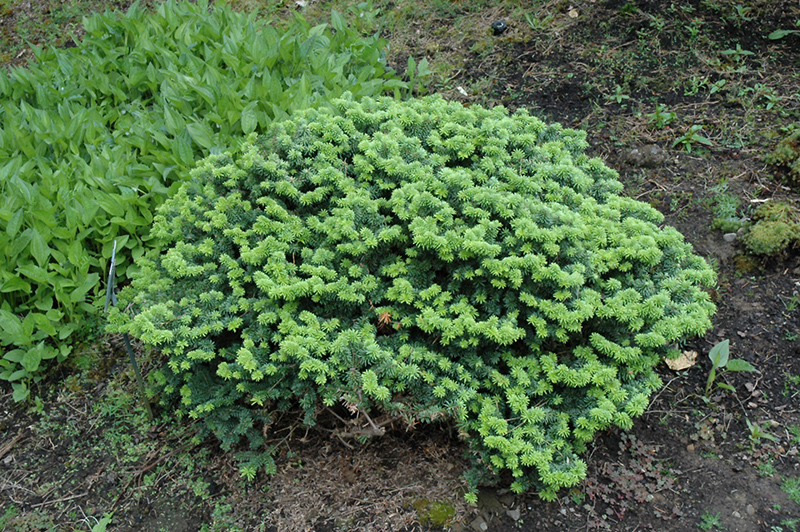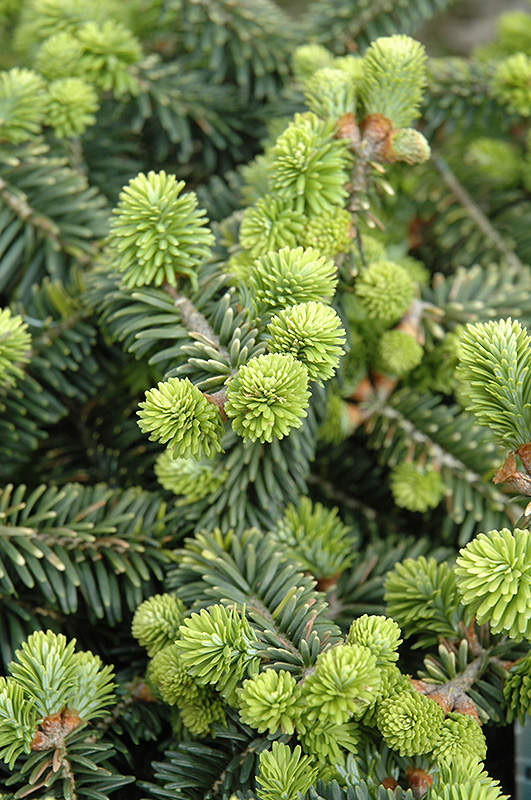* This is a "special order" plant - contact store for details
Height: 24 inches
Spread: 3 feet
Sunlight:
![]()
![]()
![]()
Hardiness Zone: 1b
Description:
A dark green evergreen shrub with a mounded habit, suitable for use as garden detail or in a rock garden; prefers moist, acidic soils but should do well in most garden soils, best in full sun
Ornamental Features
Dwarf Balsam Fir is a dwarf conifer which is primarily valued in the garden for its ornamental globe-shaped form. It has dark green evergreen foliage. The needles remain dark green throughout the winter.
Landscape Attributes
Dwarf Balsam Fir is a dense multi-stemmed evergreen shrub with a more or less rounded form. Its relatively fine texture sets it apart from other landscape plants with less refined foliage.
This is a relatively low maintenance shrub, and should not require much pruning, except when necessary, such as to remove dieback. It has no significant negative characteristics.
Dwarf Balsam Fir is recommended for the following landscape applications;
- General Garden Use
Planting & Growing
Dwarf Balsam Fir will grow to be about 24 inches tall at maturity, with a spread of 3 feet. It tends to fill out right to the ground and therefore doesn't necessarily require facer plants in front. It grows at a slow rate, and under ideal conditions can be expected to live for 50 years or more.
This shrub performs well in both full sun and full shade. It prefers to grow in moist to wet soil, and will even tolerate some standing water. It is particular about its soil conditions, with a strong preference for sandy, acidic soils. It is quite intolerant of urban pollution, therefore inner city or urban streetside plantings are best avoided, and will benefit from being planted in a relatively sheltered location. Consider applying a thick mulch around the root zone in winter to protect it in exposed locations or colder microclimates. This is a selection of a native North American species.
* This is a "special order" plant - contact store for details






